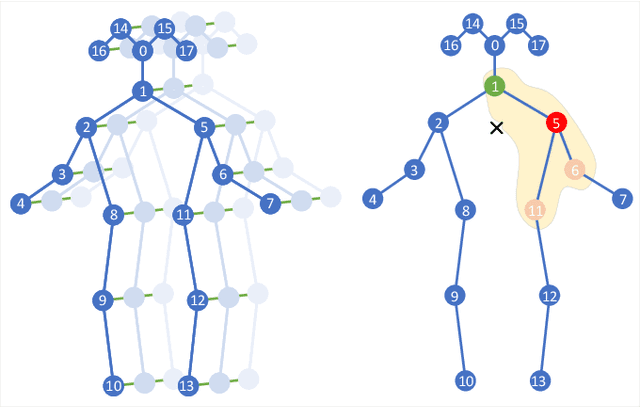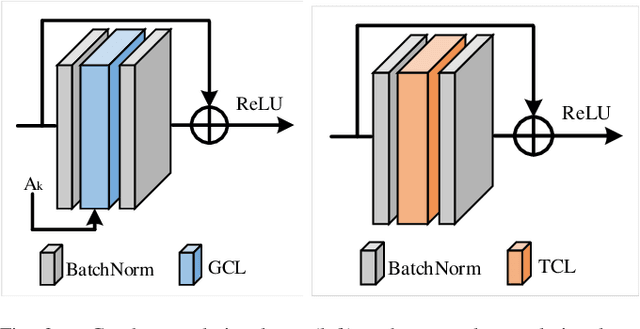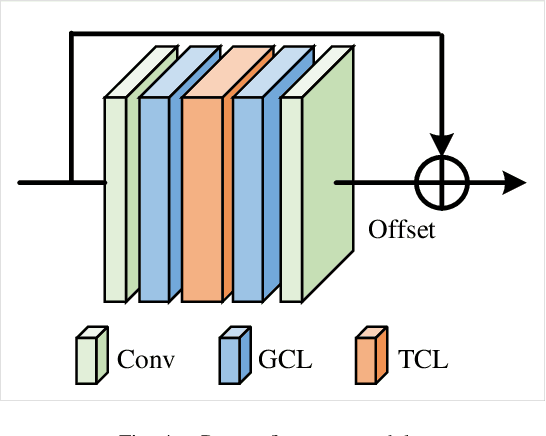Jinhui Yi
Video-Panda: Parameter-efficient Alignment for Encoder-free Video-Language Models
Dec 24, 2024Abstract:We present an efficient encoder-free approach for video-language understanding that achieves competitive performance while significantly reducing computational overhead. Current video-language models typically rely on heavyweight image encoders (300M-1.1B parameters) or video encoders (1B-1.4B parameters), creating a substantial computational burden when processing multi-frame videos. Our method introduces a novel Spatio-Temporal Alignment Block (STAB) that directly processes video inputs without requiring pre-trained encoders while using only 45M parameters for visual processing - at least a 6.5$\times$ reduction compared to traditional approaches. The STAB architecture combines Local Spatio-Temporal Encoding for fine-grained feature extraction, efficient spatial downsampling through learned attention and separate mechanisms for modeling frame-level and video-level relationships. Our model achieves comparable or superior performance to encoder-based approaches for open-ended video question answering on standard benchmarks. The fine-grained video question-answering evaluation demonstrates our model's effectiveness, outperforming the encoder-based approaches Video-ChatGPT and Video-LLaVA in key aspects like correctness and temporal understanding. Extensive ablation studies validate our architectural choices and demonstrate the effectiveness of our spatio-temporal modeling approach while achieving 3-4$\times$ faster processing speeds than previous methods. Code is available at \url{https://github.com/jh-yi/Video-Panda}.
MV-Match: Multi-View Matching for Domain-Adaptive Identification of Plant Nutrient Deficiencies
Sep 02, 2024



Abstract:An early, non-invasive, and on-site detection of nutrient deficiencies is critical to enable timely actions to prevent major losses of crops caused by lack of nutrients. While acquiring labeled data is very expensive, collecting images from multiple views of a crop is straightforward. Despite its relevance for practical applications, unsupervised domain adaptation where multiple views are available for the labeled source domain as well as the unlabeled target domain is an unexplored research area. In this work, we thus propose an approach that leverages multiple camera views in the source and target domain for unsupervised domain adaptation. We evaluate the proposed approach on two nutrient deficiency datasets. The proposed method achieves state-of-the-art results on both datasets compared to other unsupervised domain adaptation methods. The dataset and source code are available at https://github.com/jh-yi/MV-Match.
Rethinking temporal self-similarity for repetitive action counting
Jul 12, 2024



Abstract:Counting repetitive actions in long untrimmed videos is a challenging task that has many applications such as rehabilitation. State-of-the-art methods predict action counts by first generating a temporal self-similarity matrix (TSM) from the sampled frames and then feeding the matrix to a predictor network. The self-similarity matrix, however, is not an optimal input to a network since it discards too much information from the frame-wise embeddings. We thus rethink how a TSM can be utilized for counting repetitive actions and propose a framework that learns embeddings and predicts action start probabilities at full temporal resolution. The number of repeated actions is then inferred from the action start probabilities. In contrast to current approaches that have the TSM as an intermediate representation, we propose a novel loss based on a generated reference TSM, which enforces that the self-similarity of the learned frame-wise embeddings is consistent with the self-similarity of repeated actions. The proposed framework achieves state-of-the-art results on three datasets, i.e., RepCount, UCFRep, and Countix.
SSGVS: Semantic Scene Graph-to-Video Synthesis
Nov 17, 2022Abstract:As a natural extension of the image synthesis task, video synthesis has attracted a lot of interest recently. Many image synthesis works utilize class labels or text as guidance. However, neither labels nor text can provide explicit temporal guidance, such as when an action starts or ends. To overcome this limitation, we introduce semantic video scene graphs as input for video synthesis, as they represent the spatial and temporal relationships between objects in the scene. Since video scene graphs are usually temporally discrete annotations, we propose a video scene graph (VSG) encoder that not only encodes the existing video scene graphs but also predicts the graph representations for unlabeled frames. The VSG encoder is pre-trained with different contrastive multi-modal losses. A semantic scene graph-to-video synthesis framework (SSGVS), based on the pre-trained VSG encoder, VQ-VAE, and auto-regressive Transformer, is proposed to synthesize a video given an initial scene image and a non-fixed number of semantic scene graphs. We evaluate SSGVS and other state-of-the-art video synthesis models on the Action Genome dataset and demonstrate the positive significance of video scene graphs in video synthesis. The source code will be released.
Pose Refinement Graph Convolutional Network for Skeleton-based Action Recognition
Oct 14, 2020



Abstract:With the advances in capturing 2D or 3D skeleton data, skeleton-based action recognition has received an increasing interest over the last years. As skeleton data is commonly represented by graphs, graph convolutional networks have been proposed for this task. While current graph convolutional networks accurately recognize actions, they are too expensive for robotics applications where limited computational resources are available. In this paper, we therefore propose a highly efficient graph convolutional network that addresses the limitations of previous works. This is achieved by a parallel structure that gradually fuses motion and spatial information and by reducing the temporal resolution as early as possible. Furthermore, we explicitly address the issue that human poses can contain errors. To this end, the network first refines the poses before they are further processed to recognize the action. We therefore call the network Pose Refinement Graph Convolutional Network. Compared to other graph convolutional networks, our network requires 86\%-93\% less parameters and reduces the floating point operations by 89%-96% while achieving a comparable accuracy. It therefore provides a much better trade-off between accuracy, memory footprint and processing time, which makes it suitable for robotics applications.
 Add to Chrome
Add to Chrome Add to Firefox
Add to Firefox Add to Edge
Add to Edge